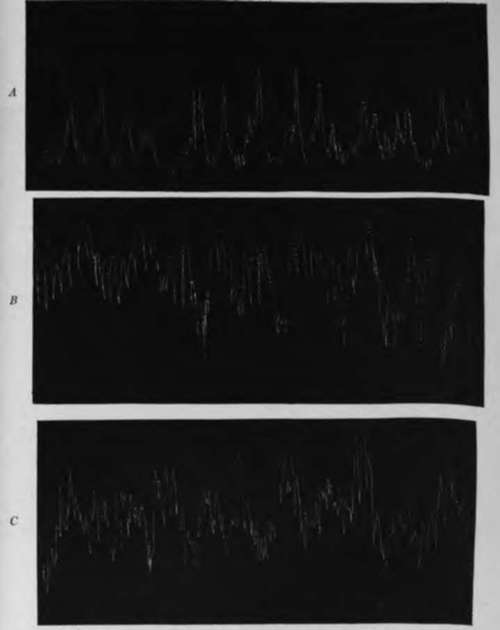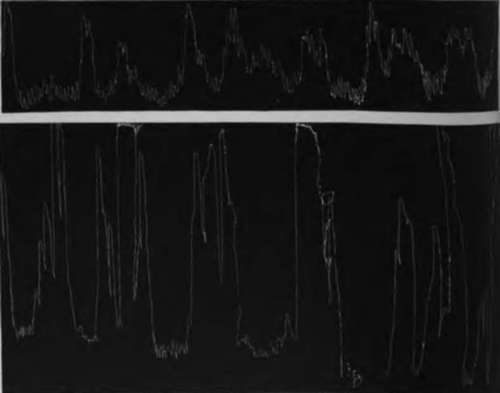2. Polyphagia And Augmented Gastric Hunger Contractions In Di With Mange
Description
This section is from the book "The Control Of Hunger In Health And Disease", by Anton Julius Carlson. Also available from Amazon: The Control of Hunger in Health and Disease.
2. Polyphagia And Augmented Gastric Hunger Contractions In Di With Mange
A number of dogs kept in the laboratory for lo periods in the course of certain lines of investigation becai afflicted with mange. Dr. Luckhardt observed that these man dogs consumed a much greater amount of food than they did befc contracting or after being cured of the disease. It was also not that a dog with mange is more susceptible to cold than norn dogs, as shown by their almost constant shivering, even in a roc hyperemia. These conditions must involve an abnormal heat loss from the skin.

Fig. 30.-Records of the gastric hunger contractions of a dog before and during fatal pancreatic diabetes (Luckhardt). Bottom of tracings +0 pressure of broraoform. A, type II contractions indicating moderate hunger in dog before rendered diabetic. Four-fifths original size. B, culmination of a tetany period in the diabetic animal lasting about 20 minutes. Smaller tetany periods are likewise shown. Throughout, a type III rhythm on a high tonus. Two-thirds original size. C, tracing obtained from the empty stomach of a diabetic dog less than 2 days before death. Throughout, type III contractions on a high tonus. Dog too weak to walk. Ate 105 gm. meat- the last meal before death, which followed 2 days later. Two-thirds original size.
with temperature ranging from 550 to 650 F. This is probably due to the loss of hair, and to interference with the normal vasoconstrictor reflexes of the skin by the persistent cutaneous

Fig. 31.-Tracing from empty stomach of dog while normal (A), and after developing severe mange (fl); showing abnormally intense gastric hunger Parallel with the mange and the polyphagia (Luckhardt).
The gastric tonus and hunger contractions were studied in a number of these mangy and polyphagic dogs, in order to determine whether the greater hunger was due to greater gastric hunger contractions. This proved to be the case. A dog with extensive mange but otherwise healthy exhibits abnormally great gastric tonus and hunger contractions. The latter tend to become tetanic, and when this is not the case, the individual contractions are abnormally strong. The polyphagia of the mangy dogs is therefore due to the greater vigor of the gastric hunger mechanism. The stronger gastric contractions are probably brought about indirectly through increase in muscular metabolism as a result of the too great loss of heat from the skin, in other words, the same effects as we found on exposing normal men and animals to great and prolonged cold.
Continue to:
- prev: III. Condition Of The Gastric Hunger Mechanism In Disease Of Experimental Animals
- Table of Contents
- next: 3. Hunger And Appetite In Cases Of Alcoholic Gastritis In Dogs
